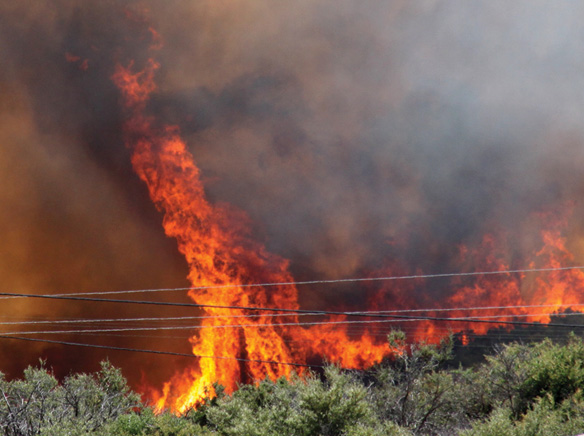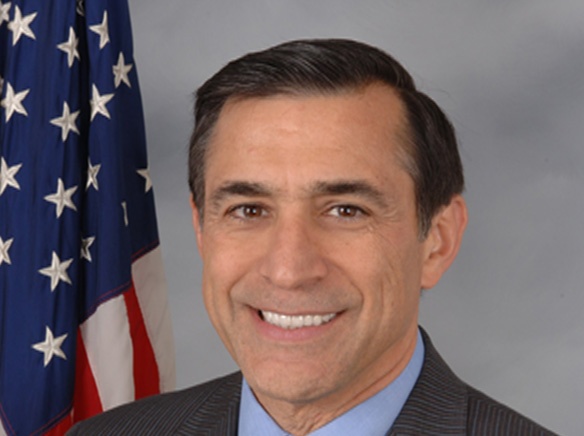The increase in household and business photovoltaic systems also means an increased risk of electrical shock to firefighters who need to extinguish any blazes in structures using that technology.
The increase in household and business photovoltaic systems also means an increased risk of electrical shock to firefighters who need to extinguish any blazes in structures using that technology.
"PV and firefighter safety" was part of the August 15 "Reliability of PV System and Components" session during the August 12-16 annual meeting of SPIE, the international optical society which held its annual conference at the San Diego Convention Center. The presentation was given by safety science company Underwriters Laboratories senior regulatory engineer John Taecker and also involved the research of UL fire hazard research engineer Bob Backstrom and UL electrical hazard research engineer Dave Dini. The Department of Homeland Security gave UL a Federal Emergency Management Agency grant to help fund the research, and UL worked with various fire departments including the California Department of Forestry and Fire Protection.
"It's basically practical science," Taecker said.
The research did not address the fire hazards of photovoltaic systems but rather the hazards of extinguishing fires when photovoltaic electricity is being created. "This research is about protecting the firefighters. It is not about protecting the house," Taecker said.
One of the fire agencies which worked with UL was the Kern County Fire Department. In 2007 a Bakersfield fire in a house with a photovoltaic system produced voltages higher than the firefighters had been expecting.
Taecker cited four levels of electrical contact, noting that different individuals may have different numerical parameters. Contact of less than two direct current milliamps is considered safe, and the person who contacts it will feel no perception.
Contact with between two and 39 DC milliamps will produce perception and a startle reaction. Taecker reminded the audience that a firefighter may be on the top of a roof or a ladder when he experiences that startle reaction. "That's not a good thing," he said.
Contact with between 40 and 239 DC milliamps will produce body freeze, including a stoppage of muscles. A current of 240 DC milliamps or greater will result in heart stoppage and electrocution.
Factors affecting electric shock risk include voltage, nozzle diameter, spray pattern, the source-to-nozzle distance, water conductivity (for example, salinity), and water pressure. At ten feet away using a one-inch nozzle, a direct current of 600 volts will produce 3.2 milliamps while a current of 300 volts will produce 1.6 milliamps.
Firefighter personal protective equipment may provide some protection, but such gear is designed to protect against thermal energy, impact, and abrasion. "The boots and shoes may provide some electrical insulation," Taecker said. "It's not something to be relied upon."
Taecker added that such equipment must be dry in order to protect against electrical hazard.
Unlike a gas system or a conventional electrical meter, there is no remote disconnect mechanism for a photovoltaic system. "You can't turn off a PV panel," Taecker said. "You can isolate parts of the system, but you can't turn off an array."
Since panels are energized by light, a fire department's scene lights for night fires may add to the panels' energy and the fire itself can produce light which charges the photovoltaic system.
If a fire is inside a building, firefighters will cut a hole in the roof so that the smoke will rise rather than go through the inside of the building. The ventilation procedure may be done with an ax, a saw, or cable cutters. "There is a danger for electrical shock," Taecker said. "There can be the energizing of the head of the ax."
Taecker also noted that a shock risk exists if the conductors or electrical system are severed. The national electrical code adopted in 2011 requires that conductors be installed at least 10 inches below the roof, but that is not retroactive. Furthermore, the national code is incorporated into state and local codes in cycles; California is still using the 2008 national electrical code and is not scheduled to adopt the 2011 national code until 2014. Cutting through a conduit not only brings a shock risk but also creates the risk of open flaming.
"This information helps in establishing what types of requirements should there be for installation," Taecker said.
Firefighters also face the risk of shock from photovoltaic systems which can be damaged when a roof collapses. "They continued to provide electricity after they were significantly damaged," Taecker said. "Even a severely damaged PV array will still continue to produce power."
Taecker added that a panel can also slide off the roof.
Taecker noted that each fire department has its own training program and that the information on photovoltaic system safety should be incorporated into that training.














